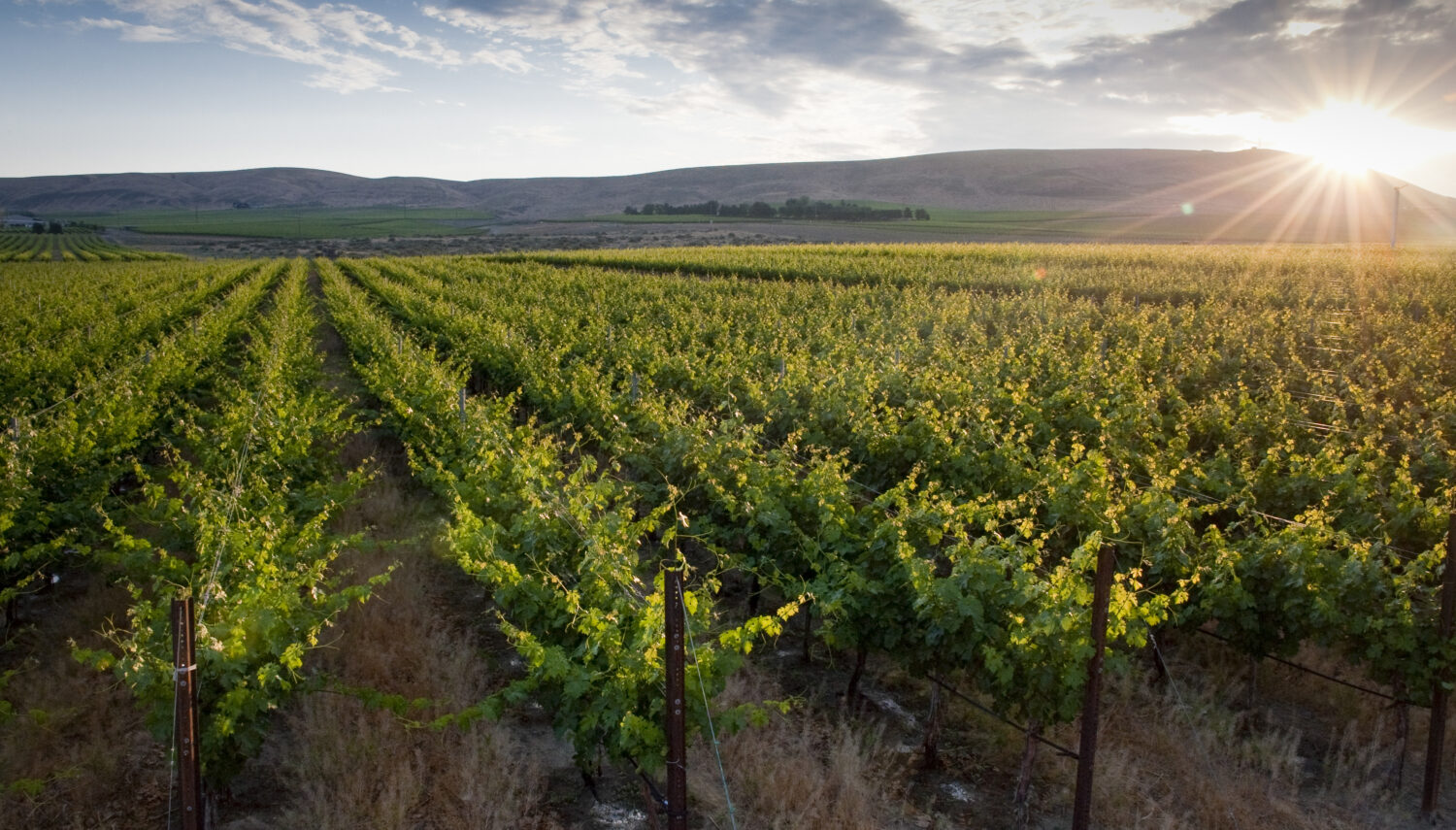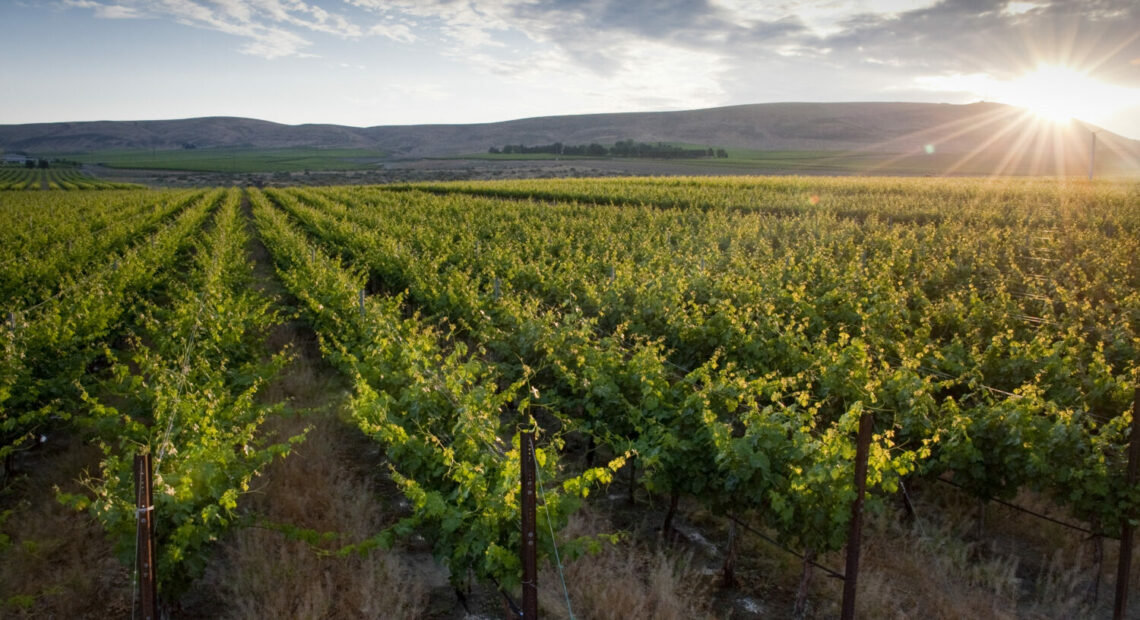
New Washington wine research focuses on climate change, sustainability
Listen
(Runtime 1:03)
Read
It’s been a slower start to spring in the Pacific Northwest, and the wine grape buds are just breaking on the vines of Washington vineyards.
Linn Scott is a winemaker for Sparkman Cellars in Woodinville. He spends a lot of time in the car driving across the state, sometimes up to 600 miles, to check on the vineyards in Eastern Washington.
Almost all the wineries in Western Washington get their grapes from vineyards on the east side of the state, Scott said.
“Anything that happens in Eastern Washington is a problem for Western Washington and our businesses over here,” Scott said. “When there’s a drought in the Yakima Valley, or when there’s a forest fire in Canada or in Oregon, all of those things are impacting the fruit that we work with.”
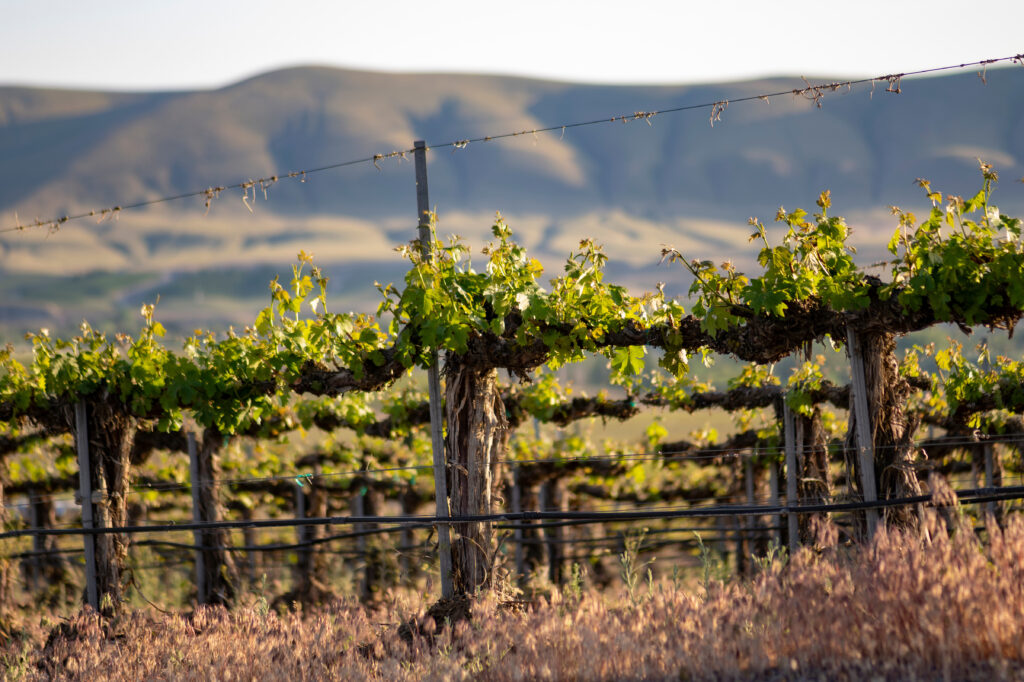
Many grapes used in Sparkman Cellars wines come from Kiona Vineyards in Eastern Washington. Winemakers and grape growers in have had to grapple with hotter summers and longer winters. New research may give them more options for a consistent growing season. (Credit: Andrea Johnson Photography / Washington State Wine Commission)
Now, winemakers and grape growers across the state will likely have more tools to use when working to mitigate challenges from a changing climate. The Washington Wine Commission recently funded nearly $1 million for research projects over the next year.
Melissa Hansen is the research program director for the Washington Wine Commission. As wildfire season heats up in the Pacific Northwest, Hansen said funding will continue for research on how wildfire smoke exposure affects wine grapes.
“Researchers are also looking at food-grade coatings that could be applied on the fruit to prevent the berries taking up unwanted smoke compounds,” Hansen said.
There is progress on the air quality sensors placed in the vineyards, Hansen said, so growers will know ahead of time with the help of a rapid test how at-risk their grapes are to taking up wildfire smoke.
Sustainability is also a common thread for about half of the upcoming grant projects. Research will focus on soil health, and treating mildew with ultraviolet light rather than harmful chemicals, Hansen said.
Hansen said that means using water conservatively, and taking care of vineyard soil not just for this year, but future years.
People from all parts of Washington’s wine industry will be part of this ongoing research, said Vicky Scharlau, executive director of the Washington Winegrowers Association. “We want to be able to understand more about the environment so we can operate within it in a more harmonized manner,” she said.
While 2021 was one of the hottest seasons he’s seen, Scott said last year’s slow and cold spring led to a late harvest stretching into November. As for this season, “You don’t always know the challenges you’re going to face in a given year,” Scott said.
Other research projects include releasing “good bugs” to eat vineyard pests like grape mealybugs and spider mites instead of spraying harmful chemicals. The bugs are released into the vineyard using a drone.
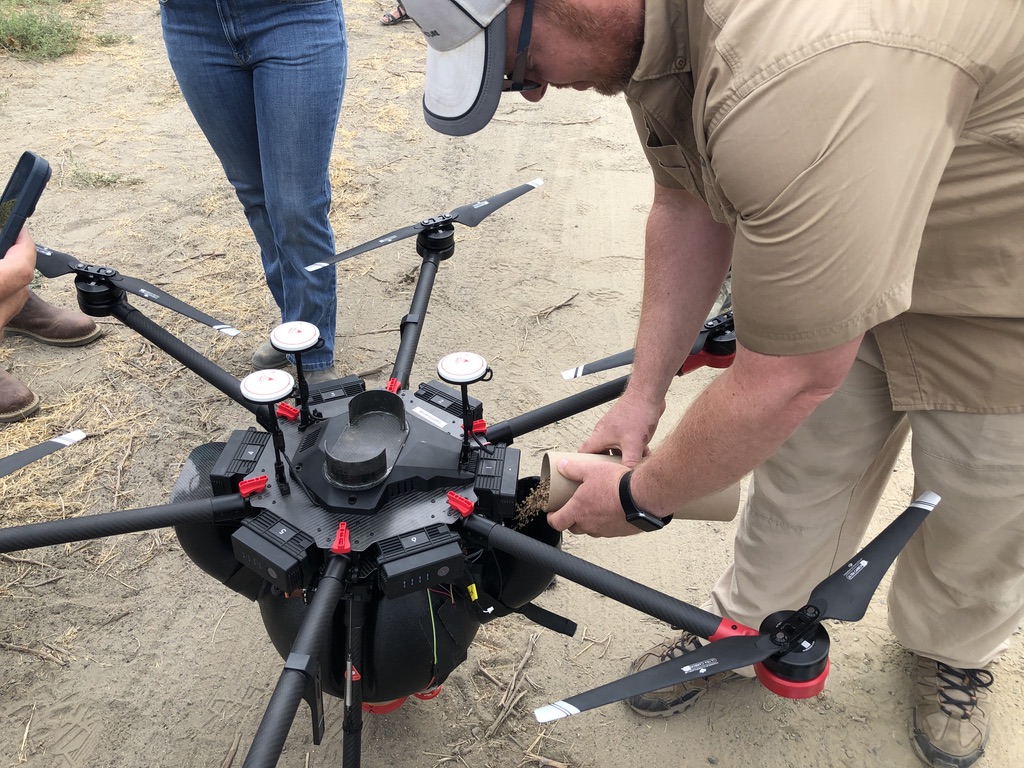
“Good bugs” (Cryptolameus montrouzieri and the predator mite Galendromus occidentalis) are poured into a drone to be released over the vineyard and prey on pests like grape mealybugs and spider mites, which can damage grapevines. (Credit: Washington State Wine Commission)
One of the latest pieces of technology that will be improved by the end of the season is the mechanical shoot thinner.
Before grape clusters are fully developed in the spring, Hansen said there can sometimes be too many.
“If it’s too congested, you can have disease problems because the humidity allows mildew to take off,” she said.
Thinning out the grape canopies is typically labor done by hand. The new mechanical shoot thinner works like a weed wacker, moving up and down the vineyard rows. It’s recently been improved with cameras to move more efficiently between the vines. The improved shoot thinner should be ready for next year’s crop.
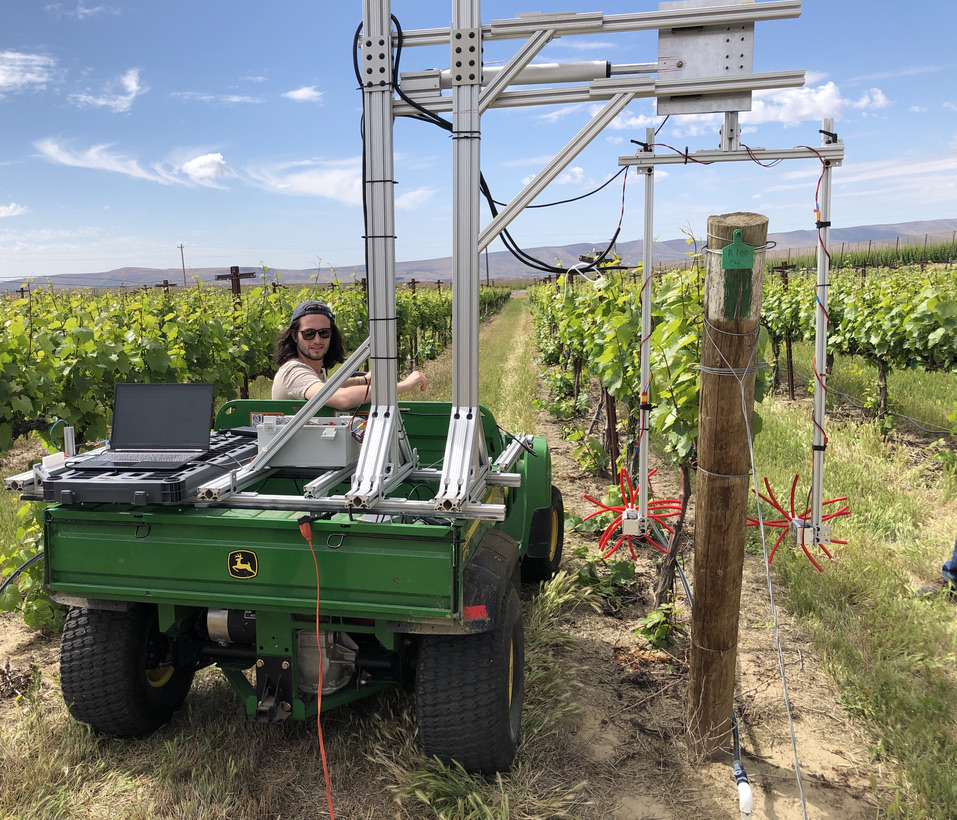
The mechanical shoot thinner has been enhanced with cameras to pinpoint clusters that are too thick for optimal grape growth. (Credit: Washington State Wine Commission)
With more than 1,000 licensed wineries and over 60,000 acres of wine grapes, Washington state is the second largest wine-producing state in the United States. The 17 million cases of wine produced each year have an in-state economic impact of $8 billion.
Despite the successes of the industry, Scharlau said the changing climate and a small labor pool have grape growers worried.
“It’s difficult to get enough employees,” Scharlau said. “Everyone in the state has a concern about finding staff.”
When someone picks up a glass of wine and looks at the swirl in the glass, Scharlau said it takes the work of many people to achieve the final pour.
“It takes researchers in the lab, winemakers, cellar workers, growers, the workers who prune the vineyard and harvest the grapes,” Scharlau said.

